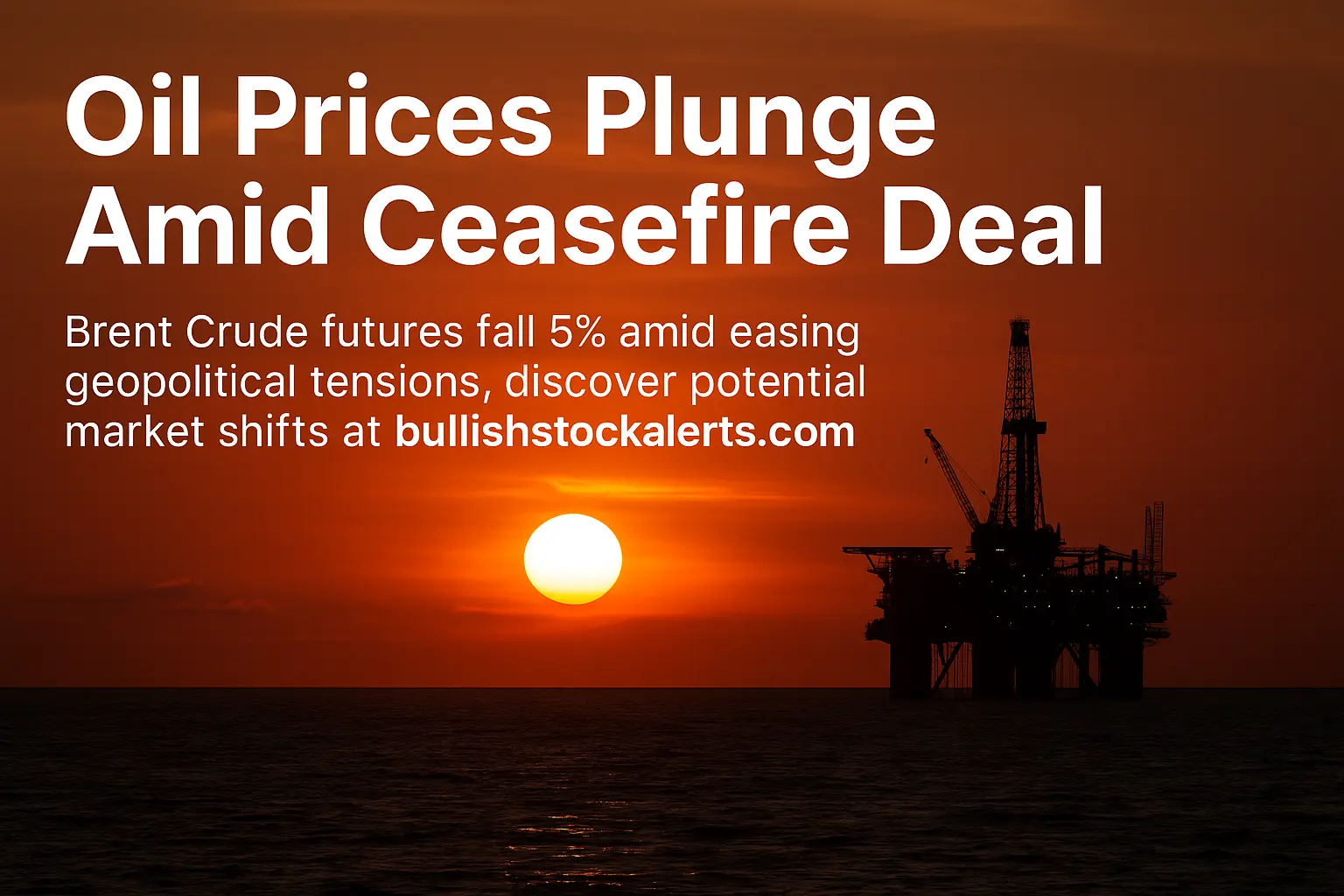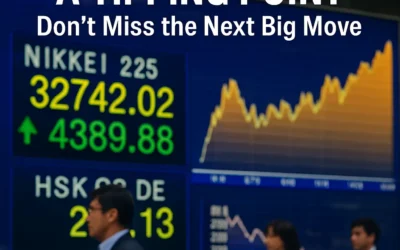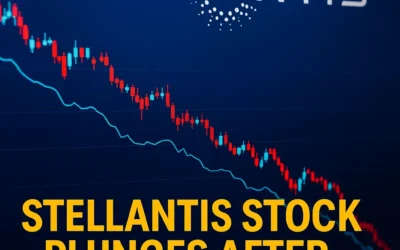Introduction
The global oil market has been rocked by geopolitical tensions between Israel and Iran, culminating in a dramatic surge in oil prices. However, a ceasefire agreement between Israel and Iran has led to a sharp reversal of this trend. With Brent crude dropping nearly 5%, investors are left grappling with the aftermath of this complex geopolitical development.
In this article, we dive into the impact of this ceasefire on oil prices, stock markets, and energy bills. Additionally, we will examine the technical aspects of the oil market and offer price targets for oil over multiple time frames.
One of the Best Brokers in Europe
When it comes to trading oil and other commodities, having a reliable broker is essential. One of the best brokers in Europe offers competitive spreads, fast order execution, and a user-friendly platform for both new and experienced traders. Whether you are looking to capitalize on short-term price swings or long-term investments, this broker offers all the tools you need to make informed decisions.
Financial Performance
In the wake of geopolitical uncertainty, oil markets have seen significant price volatility. The most recent data shows that oil prices tumbled by nearly 5% on Tuesday after a ceasefire agreement was reached between Israel and Iran. As of now, Brent crude is trading at $68 per barrel, significantly lower than the high of $81 per barrel reached after missile strikes on Iran’s nuclear sites.
This dramatic swing in oil prices highlights the market’s sensitivity to geopolitical events, particularly when it comes to key trading routes like the Strait of Hormuz. Despite the recent pullback, oil prices are still well above pre-conflict levels, indicating the lasting impact of the conflict on the energy market.
Key Highlights
- Ceasefire Agreement: The ceasefire has been agreed upon by Israel and Iran after nearly two weeks of conflict. This has resulted in a significant drop in oil prices.
- Oil Prices: Brent crude has fallen to $68 per barrel, down from a peak of $81 during the conflict.
- Global Market Reactions: Stock markets in Asia, such as Japan’s Nikkei and Hong Kong’s Hang Seng, have risen following the announcement of the ceasefire.
Profitability and Valuation
Despite the short-term volatility, oil remains a critical commodity for the global economy. As tensions ease in the Middle East, the potential for sustained stability in oil prices remains high. For investors, this provides an opportunity to assess whether the recent dip presents a good buying opportunity or if the market will remain volatile in the near term.
Debt and Leverage
The oil market is often influenced by geopolitical events, and as a result, companies that rely on oil production are subject to volatility. This affects their debt and leverage ratios, as fluctuations in oil prices can impact their profitability and ability to service debt. Companies in the energy sector must carefully manage their exposure to geopolitical risks and hedging strategies.
Growth Prospects
As the ceasefire holds and stability returns to the region, oil prices are expected to stabilize. This could lead to positive growth prospects for companies in the energy sector. However, the long-term impact will depend on several factors, including continued geopolitical tensions, global demand for energy, and developments in the global economy.
Technical Analysis
From a technical perspective, oil prices have seen a significant pullback following the ceasefire announcement. At the current price of $68 per barrel, oil is testing key support levels. If the price breaks below $68, we could see further declines. However, if the market maintains support, we could see a bounce back to the $75–$80 range in the coming weeks.
Potential Catalysts
Several factors could influence oil prices moving forward:
- Geopolitical Stability: Continued peace in the Middle East will likely lead to more stability in oil prices.
- Global Economic Recovery: A recovery in global demand for energy could help support higher oil prices.
- US Dollar Movements: Since oil is priced in USD, any movement in the value of the US dollar could impact oil prices.
Leadership and Strategic Direction
Energy companies with strong leadership and effective strategies for navigating geopolitical risks are best positioned to thrive in this environment. Investors should look for companies that are not only adept at managing short-term market fluctuations but also focused on long-term growth and innovation.
Impact of Macroeconomic Factors
The broader macroeconomic environment plays a crucial role in shaping the future of oil markets. Factors such as interest rates, inflation, and global trade policies all have the potential to influence oil prices. With global inflation concerns and the US Federal Reserve’s decisions on interest rates, oil prices could experience additional volatility in the near term.
Total Addressable Market (TAM)
The total addressable market for oil remains massive, with the energy sector still being the backbone of global industry. As oil remains a critical commodity, the TAM for oil-based investments continues to offer significant opportunities for growth, despite geopolitical uncertainties.
Market Sentiment and Engagement
Investor sentiment remains mixed, with some traders taking a cautious approach due to ongoing geopolitical risks, while others are looking for opportunities as oil prices pull back. Engagement in the oil markets is high, with traders closely monitoring developments in the Middle East and adjusting their strategies accordingly.
Conclusions, Target Price Objectives, and Stop Losses
Based on the current market conditions and the geopolitical situation, our target price for Brent crude is as follows:
- Short-Term Target: $70 per barrel, with potential for a rebound if geopolitical tensions ease further.
- Medium-Term Target: $75 per barrel, as the market stabilizes and global demand picks up.
- Long-Term Target: $80–$85 per barrel, driven by sustained economic growth and rising energy needs.
For risk management, we recommend placing stop-loss orders at $65 per barrel to protect against any further downside risk.
Discover More
For more insights into analyzing value and growth stocks poised for sustainable growth, consider this expert guide. It provides valuable strategies for identifying high-potential value and growth stocks.
We also have other highly attractive stocks in our portfolios. To explore these opportunities, visit our investment portfolios.
This analysis serves as information only and should not be interpreted as investment advice. Conduct your own research or consult with a financial advisor before making investment decisions.
Looking to Educate Yourself for More Investment Strategies?
Check out our free articles where we share our top investment strategies. They are worth their weight in gold!
📖 Read them on our blog: Investment Blog
For deeper insights into ETF investing, trading, and market strategies, explore these expert guides:
📘 ETF Investing: ETFs and Financial Serenity
📘 Technical Trading: The Art of Technical & Algorithmic Trading
📘 Stock Market Investing: Unearthing Gems in the Stock Market
📘 Biotech Stocks (High Risk, High Reward): Biotech Boom
📘 Crypto Investing & Trading: Cryptocurrency & Blockchain Revolution
Did you find this article insightful? Subscribe to the Bullish Stock Alerts newsletter so you never miss an update and gain access to exclusive stock market insights: https://bullishstockalerts.com/#newsletter.
Avez-vous trouvé cet article utile? Abonnez-vous à la newsletter de Bullish Stock Alerts pour recevoir toutes nos analyses exclusives sur les marchés boursiers : https://bullishstockalerts.com/#newsletter.









0 Comments